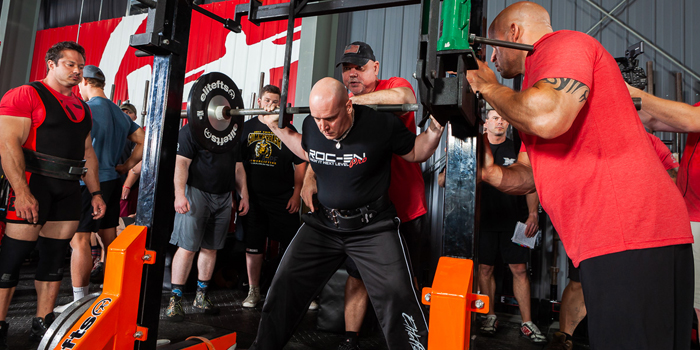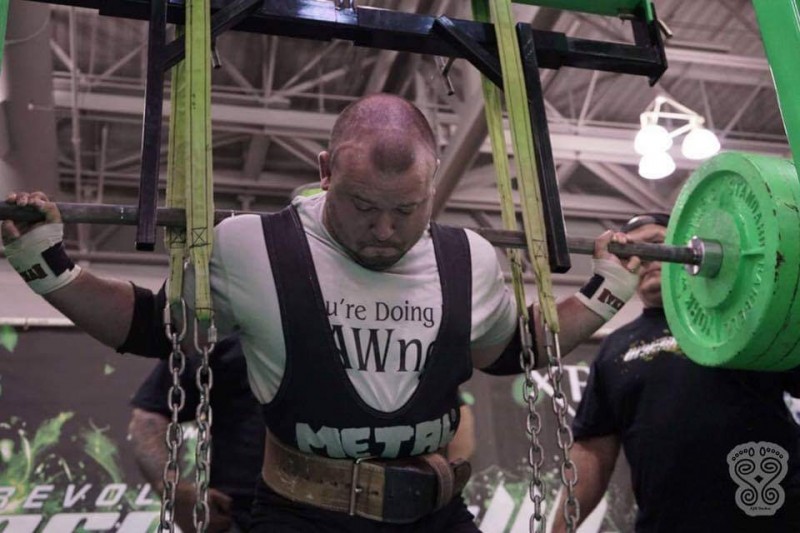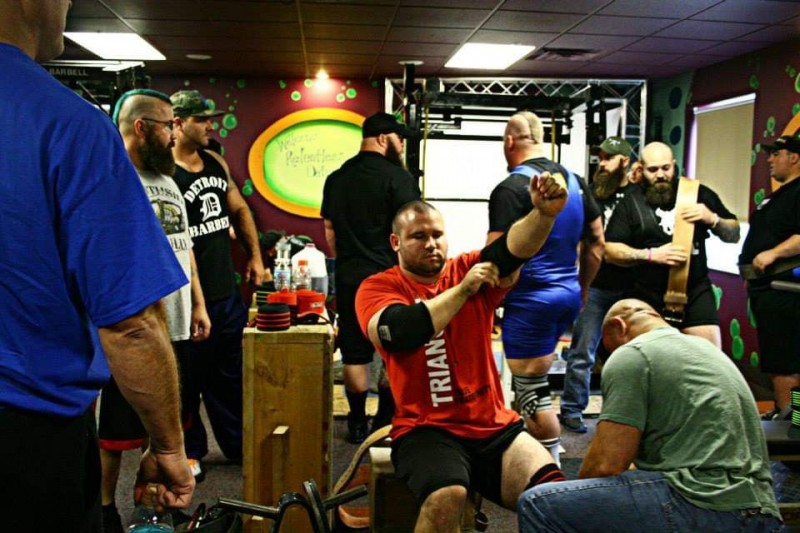
Powerlifting in 2019 is better than it ever has been. There are multiple meets every single weekend, tons of great gyms to train at in almost every city, and industry competition has driven innovation, creating lots of unique meathead product development.
The constantly increasing number of competitors has made my little underground niche sport into something much bigger and ultimately, much better. Sure, there are some negatives and general internet ridiculousness, but otherwise, powerlifting is bigger and better than it was when I started in 2004.
WATCH: Table Talk — The Future of Powerlifting with Dave Tate and Joe Sullivan
There is one major exception. The death of the powerlifting crew.
When I first started, everyone trained in groups. No one did this alone. I was an anomaly, heading to meets by myself with no one to help me and no clue what to do. It seemed like every other lifter was there with an entourage, a big group of guys all wearing the same crappy, cheap screen-printed gym T-shirt. Warm-up rooms were quickly divided up into small circles of chairs, with one circle for each unique group.

The first group that I got to be a part of was in 2010 and was when I felt like I became a powerlifter. I trained at former elitefts team member Chris Mason’s gym in Kernersville, North Carolina, with a group where 900-pound squats and women deadlifting 550 were the norms. It was incredible! I didn’t even have to train to get better; all I had to do was be there and observe. Getting under the bar with that group quickly led to progress, every lift was coached (and nothing was filmed…), and everybody was a part of every single lift. Everybody spotted the heavy attempts, everybody stopped to be a part of the big lifts. The gym went full focus on that one lifter.
Powerlifting meets were no different. Usually, the biggest entourages would take over the platforms and run every one; spotting, loading, and even a little coaching. Being at a meet by myself was strange, and I was the odd man out — big time. I’m grateful for the meets where people pulled me into their crews and made me feel like a part of their team. That was likely the only reason I made it through those meets! (Thanks to Ted and Steve.)
Flash forward to 2019.
I did a meet last December that was held in a CrossFit gym. They had a rig set up right in the middle of the gym with 10 squat stations. Once warm-ups got rolling, no less than eight stations were set up. Think about that: 15 people in a flight and eight stations with one to two people per station! It was ridiculous. Everybody had some big stupid over-ear headphones on, completely in their own worlds, and ignoring the rest of the room. No one was helping anyone! Sadly, this feels like the norm.
Dave Tate made a comment recently on this topic, saying to look at Instagram and watch for how many spotters and coaches you see in people’s videos. You don’t have to look long to see that in so many there is nothing but the lifter with their big dumb headphones and all. People aren’t training in groups anymore, or not nearly as many are, at least. Two cameras, sure, and an online coach 1,000 miles away, but no one’s paying attention in the moment.

Why does this matter? First, any decent lifting crew is 100 times more valuable than your online coach. I don’t care how good your coach is, and I don’t care how good your videos are. They aren’t there in the moment to make adjustments and get you right for the very next rep. No matter how good they are — plus there are only a handful of coaches worth the money — an online coach will never beat even a mediocre in-person crew.
READ MORE: Turning Pro at the APF Women's Pro-Am
That crew that trains with you every week is much more valuable come meet day, too. They have seen every rep and been at every session; they are going to be the most useful to get your head right, and they know what you are capable of doing. If they’ve been paying attention at all, they are your most valuable coach on game day, bar none.
Second, without a lifting crew, you’re missing out on the community of powerlifting, the culture of training, and competing in groups. This sport is weird, and most of us who do it are kind of weird. Ever try to have a meaningful conversation about the intricacies of the monolift unrack with someone at work? No? Go talk to an experienced powerlifting crew and get ready for a 30-minute conversation. That’s the best part of powerlifting crews and the general culture of being a part of the group! It’s the most fun part about competing and going to train with your crew. Nowhere else will you find that many like-minded people who understand why you do what you are doing and share the same obsession with it.
Take off the headphones, put the camera away, and embrace the lifters around you. Go do it right now. Reach out to someone in your area who also competes. I promise you that you will become a better lifter. Learn from them, and hopefully, someday, you’ll have the chance to pass on some of the lessons to the next new guy in the crew.










If you train with a crew, take it to a legit powerlifting gym. Don't be the group of bros occupying 1 of the 2 squat racks for an hour in the commercial gym.
Or how about the crew all pitch in to get a nice rack for one of the guys garages. Do the long, heavy days there, and keep your commercial gym membership for accessory work and lighter/faster days.
The reason I say this, is because indeed, powerlifting has taken off. And as a result, there are idiot bros taking barbells to any floor space they can find and doing deadlifts. 8 sets, 5 minute rest in between. Meanwhile other people are waiting to use the bar. Same thing with squat racks. My gym only has 1 of them!
Most gym lifting veterans understand how to share a gym, and purposely write routines and programs with that in mind, you don't want to be taking up any given piece of equipment for too long. Sure, I'd like to do circuits of 5 different exercises, but I don't. I do 5 sets max, with 1 minute rest max, and then move on.
Just be courteous and considerate of others.
1. In my area everyone wants to CrossFit
2. I have better equipment at home than most gyms in my area
3. I get frustrated because others don’t have the commitment level. This is my problem, and it extends back to my college years when my teammates would change training times to avoid me because I worked them too hard.